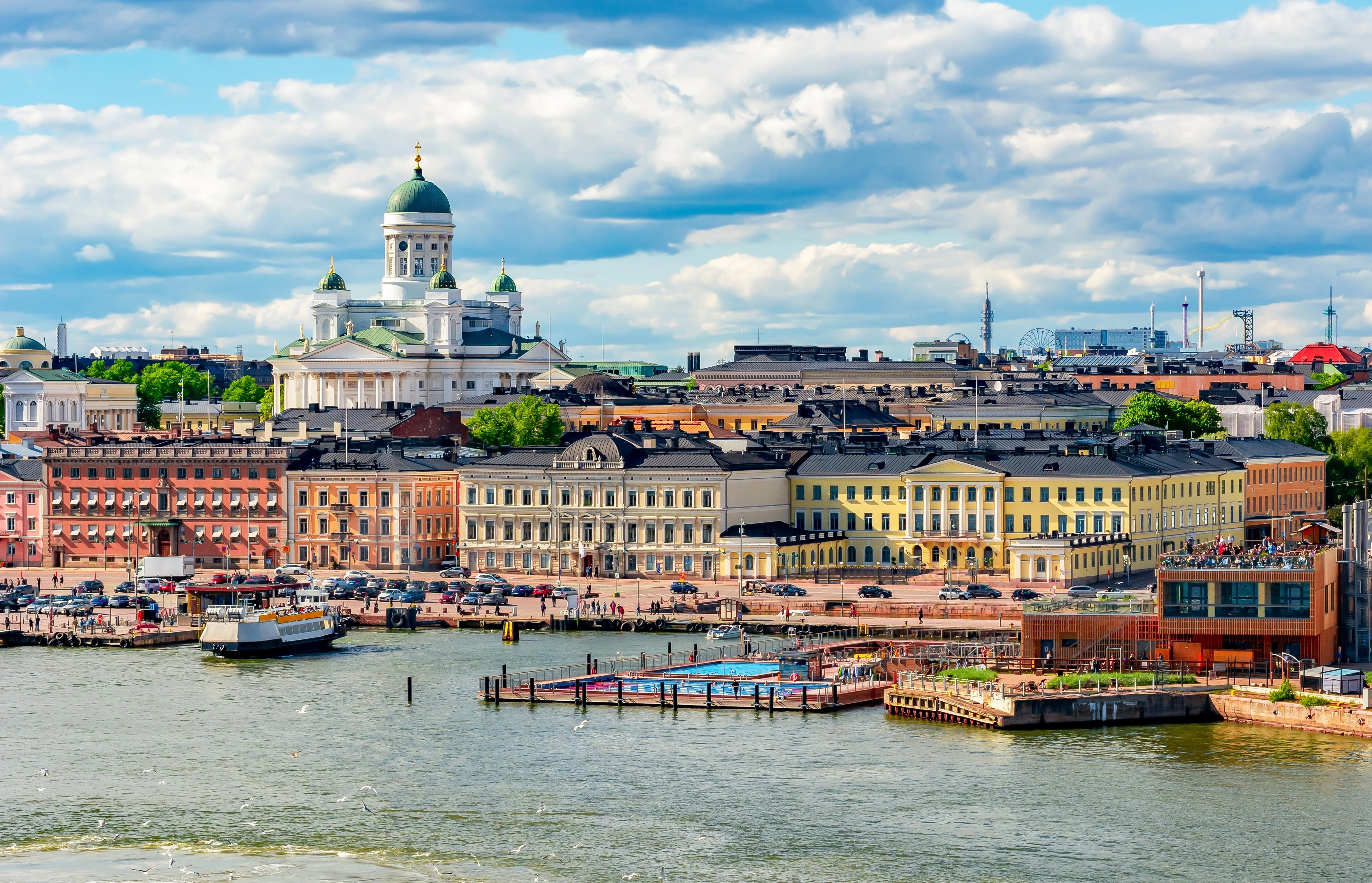
From Italy to Latvia, discover the top ten countries with the highest rates of unemployment across the European Union currently
By
Recent data taken from the Labour Force Survey – conducted by Eurostat – has revealed that a total of 13.1 million citizens were without employment across the 27 EU member states as of July 2024, representing an unemployment rate of 6 per cent.
The youth unemployment rate (those under 25) was also recorded at 14.5 per cent across the EU, down from 14.6 per cent in June 2024.
Between January and March 2024, the UK unemployment rate was at 4.3 per cent, above estimated figures predicted last year, putting it at the same levels as Hungary and the United States according to these latest figures.
With the Czech Republic, Poland and Malta having the lowest rates in the EU – 2.7 per cent, 2.9 per cent and 3 per cent respectively – which countries had the highest? Here are the top ten EU countries with the highest rates of unemployment as of July 2024, in reverse order.
10) Portugal – 6.2 per cent

Portugal ranks in tenth place according to the recent data. From 1998 until 2024, the unemployment rate averaged around 9 per cent percent, reaching its highest – 18.3 per cent in 2013 – and its lowest of 5 per cent in 2000.
According to 2022 data, unemployment affects women more, despite Portugal’s women labour force participation of 74.5 per cent sitting higher than the EU-27 average (69.5 per cent). The most popular sector for individuals to work in is the services industry, (72.1 per cent). Part-time working is relatively uncommon in Portugal (7.3 of all total employment) compared to the EU-27 average of 18.1 per cent.
The country has faced difficulty in recruiting in sectors including healthcare, IT and agriculture.
9) Italy – 6.5 per cent

Italy’s rate of unemployment, as of July 2024, is the lowest recorded since March 2008. The total number of unemployed individuals was also the lowest since then, sitting at 1.66 million. Net employment rose to 24 million, the highest on record.
However, analysis has suggested that the country has an overall need for employment of an estimated 3.8 million people between 2023–2027, with three-quarters of the demand to be absorbed by the services sector and largest uptake in employment wanted in the trade and tourism industry. The jobs most challenging to fill in this period are also estimated to include healthcare professionals such as doctors and nurses, as well as computer science and technology specialists.
8) Latvia – 6.9 per cent

The COVID-19 pandemic had a tangible impact on Latvia’s labour market, affecting the economic activity of citizens which in turn reduced their availability to work. However, many of the changes that the pandemic brought about – namely the uptick in different IT solutions such as remote work, online shopping and delivery of goods – has created new opportunities for the country’s labour market.
As of 2022 data, most jobs are concentrated in the city of Riga, with the lowest unemployment rate reported there (4.5 per cent) compared to the highest in the Latgale region (12.6 per cent). The highest number of vacancies in the first quarter of 2023 were in construction/real estate sector (40 per cent), transport/logistics (14 per cent) and manufacturing (11 per cent).
7) France – 7.5 per cent

France’s unemployment rate has remained stable over the past year, below the pre-pandemic level of 8.2 per cent. The most sought after occupations in 2023 were those in the hotel and catering professions such as cooks, hotel staff and waiters and waitresses. It’s no surprise considering that the country is the world’s most visited destination by international tourists, with tourism now accounting for 8 per cent of its GDP.
6) Estonia – 7.5 per cent

In Estonia, the number of senior and mid-level jobs is growing, but the share of lower-skilled job groups is decreasing. Data shows that too few graduates are in specialist roles such as system analysts, software developers, engineers and speech therapists. In the highly skilled workers category, a lack of roles including plumbers, machine operators and harvester drivers is also reported in the country.
5) Lithuania – 8.0 per cent

Lithuania’s unemployment rate averaged at 8.79 percent from 1995 until 2024, reaching its highest (16.40 per cent) in 2021 and a record low (2.70 per cent) in 2007. The majority of jobs available, according to 2022 data, are in the country’s Vilnius City Municipality (31.1 per cent).
In 2022, the number of job offers for skilled workers or operators was almost twice as high as the number of relevant jobseekers. However, the number of people seeking unskilled jobs was 1.4 times highe than the number of job vacancies.
The country’s ageing population also requires a greater number of healthcare professionals. Most years, Lithuania experiences a shortage of nursing professionals and doctors – the number of such job vacancies is greater than that of relevant jobseekers.
4) Sweden – 8.3 per cent

In the autumn of 2022, 41 per cent of Swedish private employers reported that a skills shortage when recruiting in the previous six months. A skills shortage in the country for workers has been reported in fields including midwives, civil engineers, system analysts and IT architects, specialist nurses and doctors – despite the country’s largest sector being in healthcare and social work.
In the country’s Blekinge County, there is a negative net commuting rate, with 1566 more people commuting out of county than into it for work, according to 2022 data.
3) Finland – 8.4 per cent

Finland, ranking third, experiences a high unemployment rate for several reasons. According to its Ministry of Finance Head of Macro Forecasting Janne Huovari , the country has experienced a slower economic growth due its sensitivity to interest rate changes compared to other EU members states – but as a benefit, a drop in interest rates in Finland would support economic growth faster than other member states.
According to Huovari, Finland has also suffered more economically than other EU countries in the wake of the Russia-Ukraine war.
Occupations with the biggest shortages include jobs within social and healthcare services, early childhood education and care and IT.
2) Greece – 9.9 per cent

Greece’s high unemployment rate, according to data taken in 2022, is highest among women between 15-24, those who live in Thessaly, and individuals who attended only a few years of elementary school.
The highest number of jobs available are in the tourism sector, although the ability to move for jobs in Greece is also limited compared to other EU-27 countries, due to the very high rate of home ownership – 80 per cent – as well as social and cultural factors.
1) Spain – 11.5 per cent

Spain takes the number one spot, with the highest unemployment rate out of any EU countries surveyed. One reason for this is the country’s dual labour market – in which workers are hired on either fixed, temporary contracts or regular open-ended contracts. More than 24 per cent of the Spanish work force are employed on temporary work contacts, and 90 per cent of new hires each month have temporary work contracts.
High costs for employers who want to hire workers on regular contracts, coupled with high levels of involuntary part-time employment also mire the country’s ability to decrease its unemployment rate.
The country has recently faced difficulty in finding workers in the healthcare sector, so demand for medical practioniers and nurses is high – especially in the Andalusia region. Individuals with proficient technical skills are also being targeted to fill vacancies after Spain plan to grow tech sectors including telecommunication companies and logistics centres.




